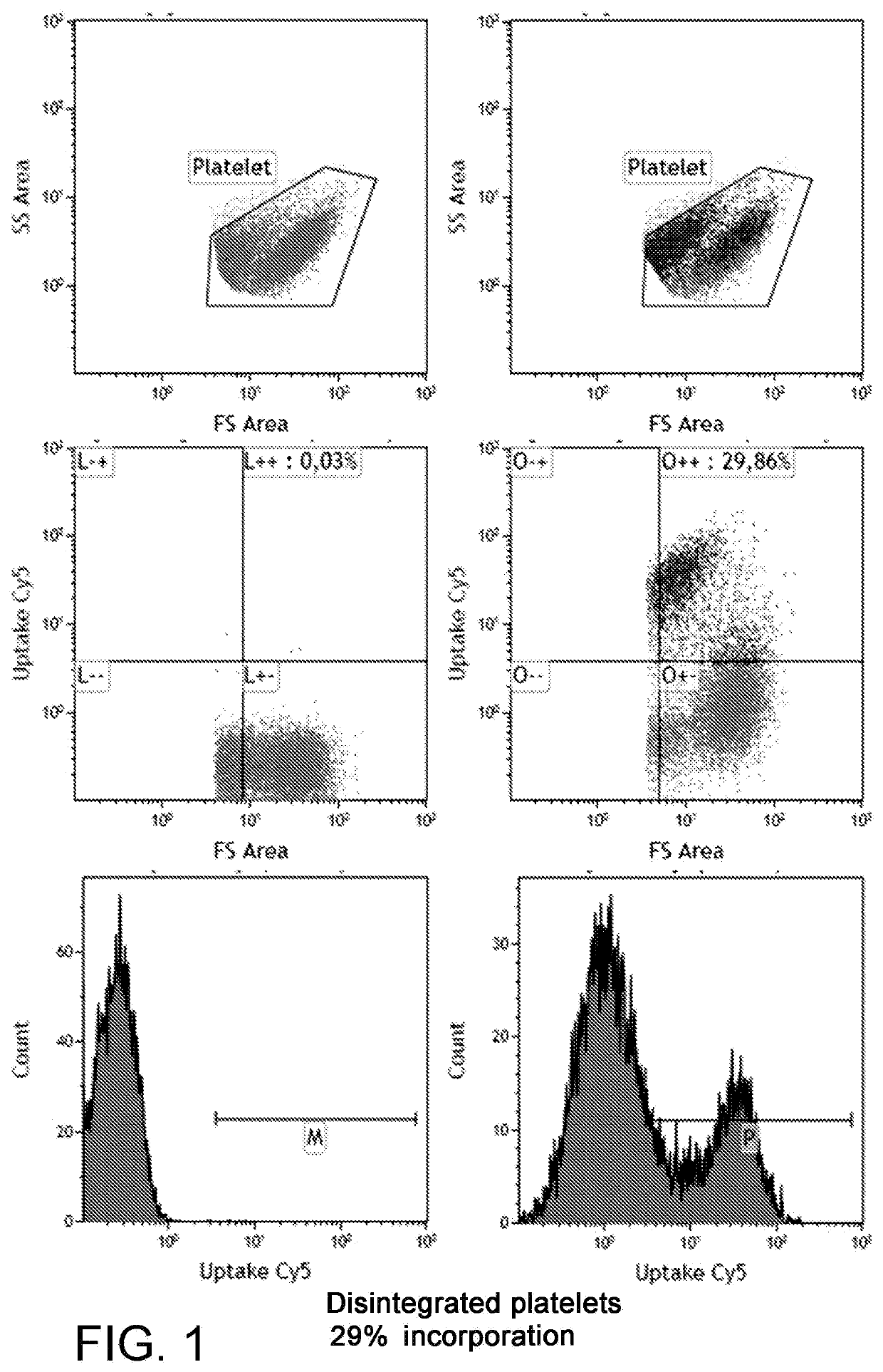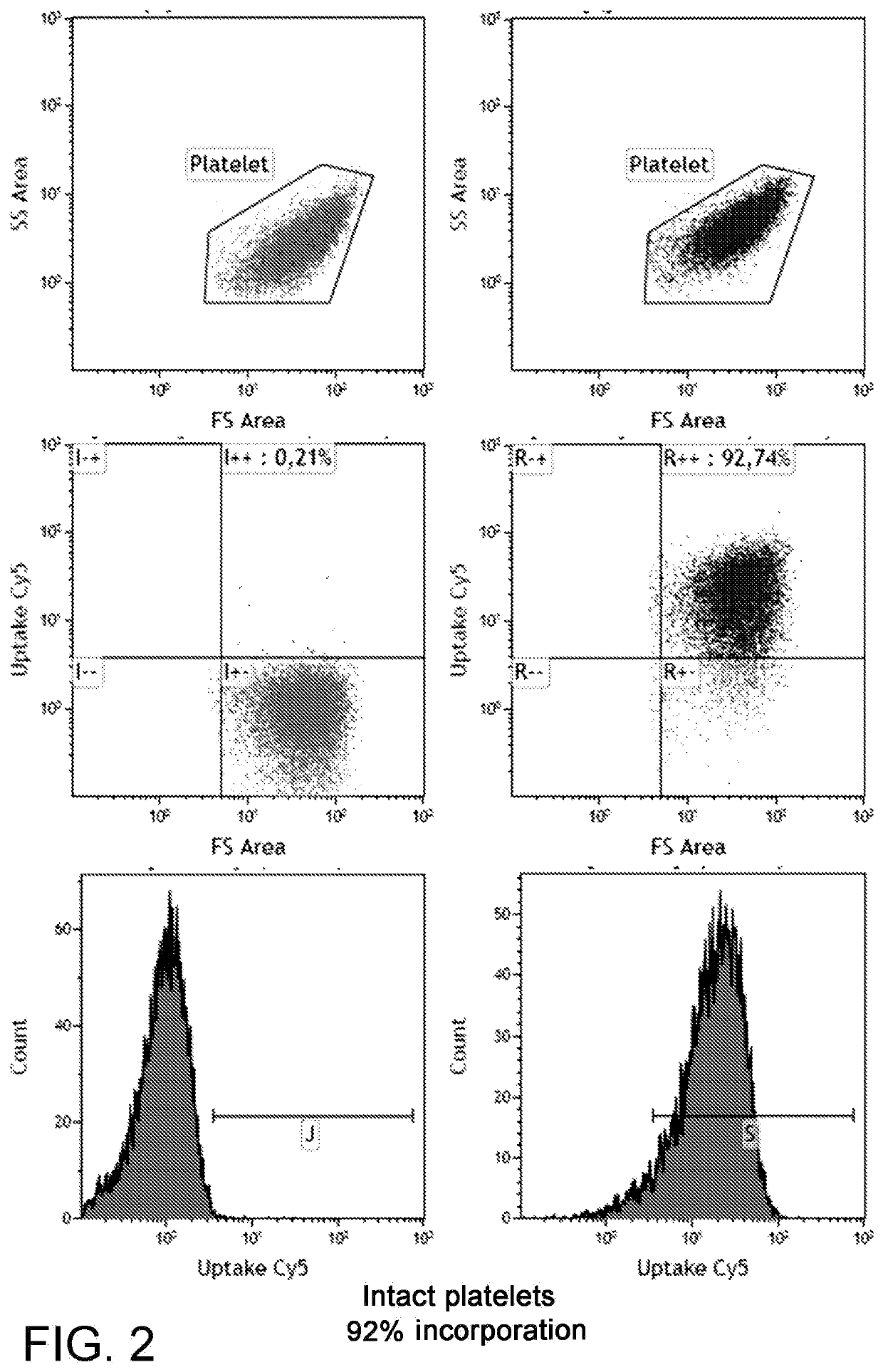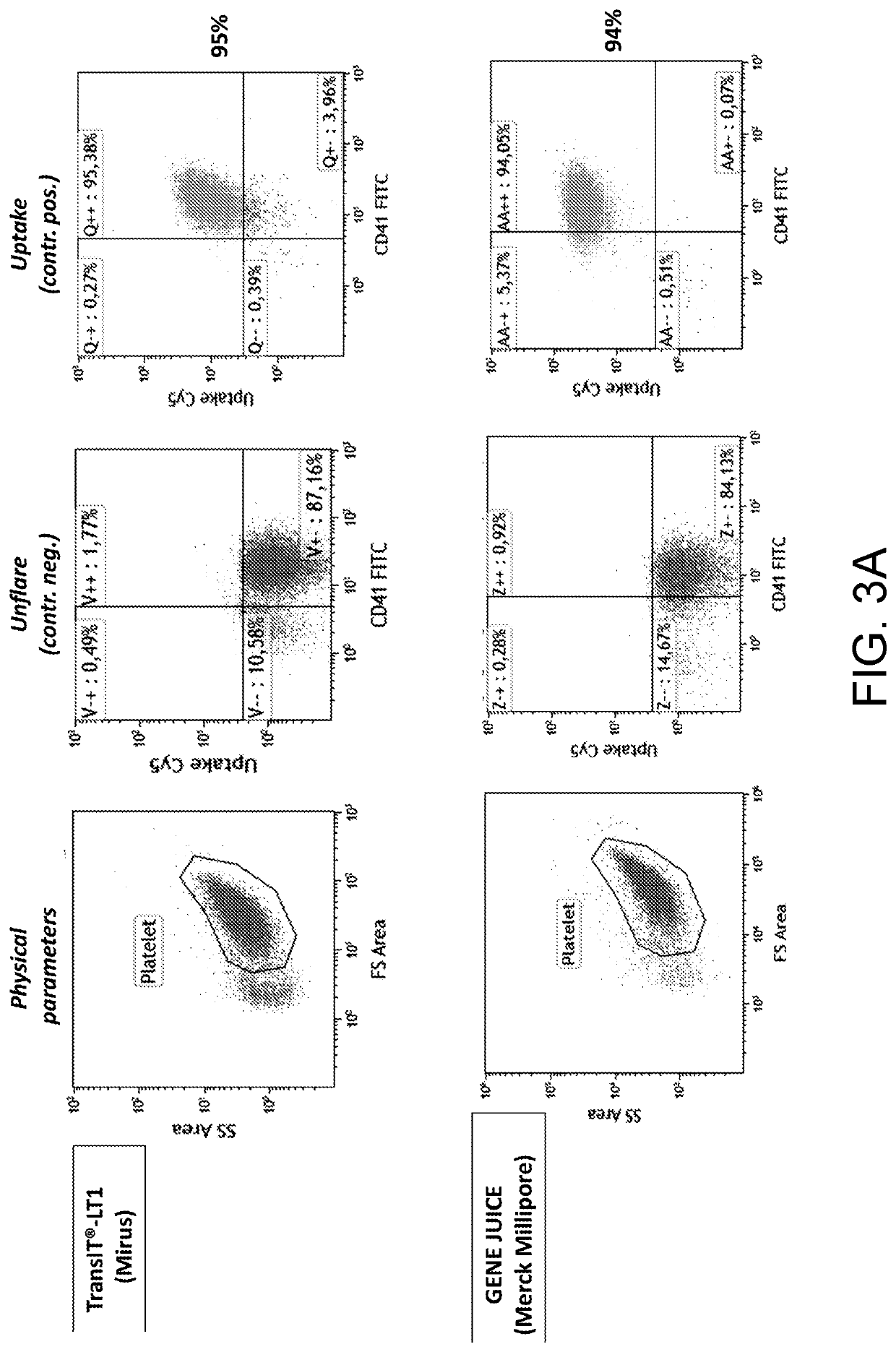Method for RNA tagging and analysis on single cell
a single cell and rna technology, applied in the field of single cell rna tagging and analysis, can solve the problems of inability to perform analysis, and the tagging is not readily available with the current technology
- Summary
- Abstract
- Description
- Claims
- Application Information
AI Technical Summary
Benefits of technology
Problems solved by technology
Method used
Image
Examples
example 1
Comparison of the Incorporation Efficiency of the SmartFlare™ Probe
[0030]A platelet preparation was incubated with a SmartFlare™ probe for the uptake control. Each sample was incubated in the presence of one of the lipofection reagents shown in FIG. 3 and 300 pM of the Uptake Cy5 probe and the negative control (Scramble Cy5) for 1 hour at room temperature in RPMI1640 culture medium supplemented with glutamine. By means of the Kaluza image analysis software, the fluorescence degree was quantified and percent values of the platelets expressing the positive control signal were obtained, by subtracting the signal from the negative control in order to remove the unspecified signal.
[0031]The results are shown in FIG. 3. The reported data surprisingly show that the solution of the present invention can introduce nucleic acids in platelets, more specifically probes for detecting tagged RNA, thus surprisingly allowing a platelet RNA to be analysed on living single cell. It is worth noting th...
example 2
Tagging and Analysis of TF and 18S mRNA in Platelets
[0032]It is known that a subpopulation of human platelets express TF mRNA. The used probes include:[0033]Control probes: 18S-Hu-Cy5 Smartflare™ (Cat No. SF-142); negative control: Scramble-Cy5 SmartFlare™ (Cat No. SF-102) which binds non-sense mRNA sequences not present in the sample; positive control: Uptake-Cy5 SmartFlare™ (Cat No. SF-137) having a constitutively fluorescent fluorophore.[0034]Specific probes were designed for mRNAs of interest, in particular a Cy5 tagged probe for TF mRNA, SEQ ID NO. 1 (GTTTCACACCTTACCTGGAGACAAACC).
[0035]The platelets were isolated from whole blood of healthy volunteers after signature of the informed consent, according to methods known to those skilled in the art.
[0036]For each of the above probes, 500,000 platelets were incubated for 1 hour at room temperature in RPMI1640 culture medium supplemented with glutamine with 1.5 μl of transfection reagent Transit-LT1 1:10 diluted and 300 pM of one of...
PUM
| Property | Measurement | Unit |
|---|---|---|
| Temperature | aaaaa | aaaaa |
| Temperature | aaaaa | aaaaa |
| Time | aaaaa | aaaaa |
Abstract
Description
Claims
Application Information
 Login to View More
Login to View More - R&D
- Intellectual Property
- Life Sciences
- Materials
- Tech Scout
- Unparalleled Data Quality
- Higher Quality Content
- 60% Fewer Hallucinations
Browse by: Latest US Patents, China's latest patents, Technical Efficacy Thesaurus, Application Domain, Technology Topic, Popular Technical Reports.
© 2025 PatSnap. All rights reserved.Legal|Privacy policy|Modern Slavery Act Transparency Statement|Sitemap|About US| Contact US: help@patsnap.com



